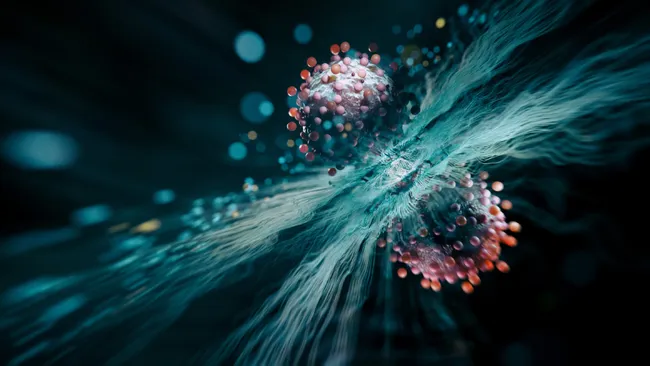The universe is a treasure trove of mysteries, especially at its smallest scales. Scientists have developed theories about hypothetical particles that, if proven to exist, could revolutionize our understanding of the cosmos. From dark photons to glueballs, these strange and fascinating entities offer clues about the hidden workings of the universe.
The Mystery of Dark Photons
Dark photons are among the most intriguing candidates in the realm of particle physics. While regular photons are responsible for electromagnetic forces, dark photons are theorized to interact exclusively with dark matter and dark energy. These components make up most of the universe, yet remain elusive and poorly understood.
The existence of dark photons could explain why dark matter clumps together in galaxies or how dark energy drives the accelerated expansion of the universe. Scientists are hunting for signs of dark photons in experiments, hoping to uncover their presence through subtle interactions with ordinary matter. The discovery of dark photons would offer a window into the “dark sector” of the universe, potentially revealing an entirely new set of forces and particles.
Curvatons and the Secrets of the Early Universe
In the moments following the Big Bang, the universe underwent a phase of rapid expansion called inflation. This process was powered by a mysterious entity known as the inflaton. However, current models of inflation have gaps that leave scientists puzzled. Enter the curvaton, a hypothetical particle that might help fill these gaps.
The curvaton is theorized to step in after inflation ends, laying the groundwork for the formation of cosmic structures like galaxies and clusters. By doing so, it allows inflation models to be more natural, avoiding the need for fine-tuning. Although adding the curvaton complicates our understanding of the early universe, it opens new doors for exploring how the cosmos evolved from a hot, dense state into the vast expanse we see today.
Glueballs: Unique Creations of the Strong Force
Among the forces that govern the universe, the strong nuclear force is responsible for holding atomic nuclei together. Its carrier particles, gluons, are unique because they can interact with each other. This interaction gives rise to the possibility of glueballs—exotic particles made entirely of gluons.
Glueballs are fascinating because they defy the norm. Unlike protons and neutrons, which contain quarks, glueballs are composed purely of gluons bound by their own force. However, their short lifetimes make them incredibly difficult to detect. Physicists are using advanced particle colliders and experiments like GlueX to search for these elusive particles. If glueballs are discovered, they would confirm one of the last major predictions of the Standard Model of particle physics.
The X17 Particle: A Potential New Force of Nature
The X17 particle has captured significant attention in recent years. It was first observed in experiments conducted at the Hungarian Institute for Nuclear Research, where scientists detected unexpected signals during nuclear decays. The anomaly suggested the presence of a new particle with a mass of 17 mega-electronvolts (MeV).
What makes the X17 particle particularly exciting is its potential to indicate a fifth fundamental force. Current physics recognizes four forces—gravity, electromagnetism, the strong nuclear force, and the weak nuclear force. If X17 is confirmed, it could expand this list and reshape our understanding of how the universe operates. However, the scientific community remains cautious, as independent confirmation of the X17 particle is still pending.
Preons: Beyond the Fundamental Particles
Quarks and leptons are considered the building blocks of matter. But the theory of preons challenges this view, suggesting that quarks and leptons are themselves composed of smaller entities. If preons exist, they could explain patterns and relationships among particles that the Standard Model currently leaves unanswered.
One motivation for the preon hypothesis is the similarity between certain particles, like electrons and muons, which differ only in mass. Preons could provide a unifying framework for understanding these variations. However, experimental evidence for preons remains elusive. Particle colliders have yet to reveal any hints of quarks or leptons being composite particles. Despite this, the concept of preons continues to inspire theoretical exploration.
Why These Hypothetical Particles Matter
The pursuit of these hypothetical particles isn’t just about solving intellectual puzzles—it has profound implications for our understanding of the universe. Dark photons, for example, could provide the missing link to explain the behavior of dark matter, a substance that shapes galaxies yet defies direct detection. Similarly, the curvaton could refine our understanding of inflation, a process that set the stage for all cosmic evolution.
Glueballs would validate key predictions of the Standard Model, cementing our understanding of the strong nuclear force. The X17 particle, if confirmed, could point to a previously unknown force, opening new frontiers in physics. And preons, by challenging the notion of fundamental particles, could lead to a more unified theory of matter.
Challenges in Detecting Hypothetical Particles
Detecting these particles is no easy task. They often require cutting-edge technology and innovative experiments. For instance, dark photons might interact so weakly with ordinary matter that their detection demands unprecedented sensitivity. Similarly, glueballs have lifetimes so short that they might decay before scientists can observe them directly.
Experiments like the Large Hadron Collider and specialized setups like GlueX play a crucial role in the search for these particles. Despite the challenges, every new discovery brings us closer to unraveling the mysteries of the universe.
The Road Ahead
The journey to confirm or debunk the existence of these particles is ongoing. Each experiment and observation contributes to a growing body of knowledge, refining theories and inspiring new questions. As technology advances, scientists will gain more tools to probe the universe’s smallest and most elusive components.
Reference:



















